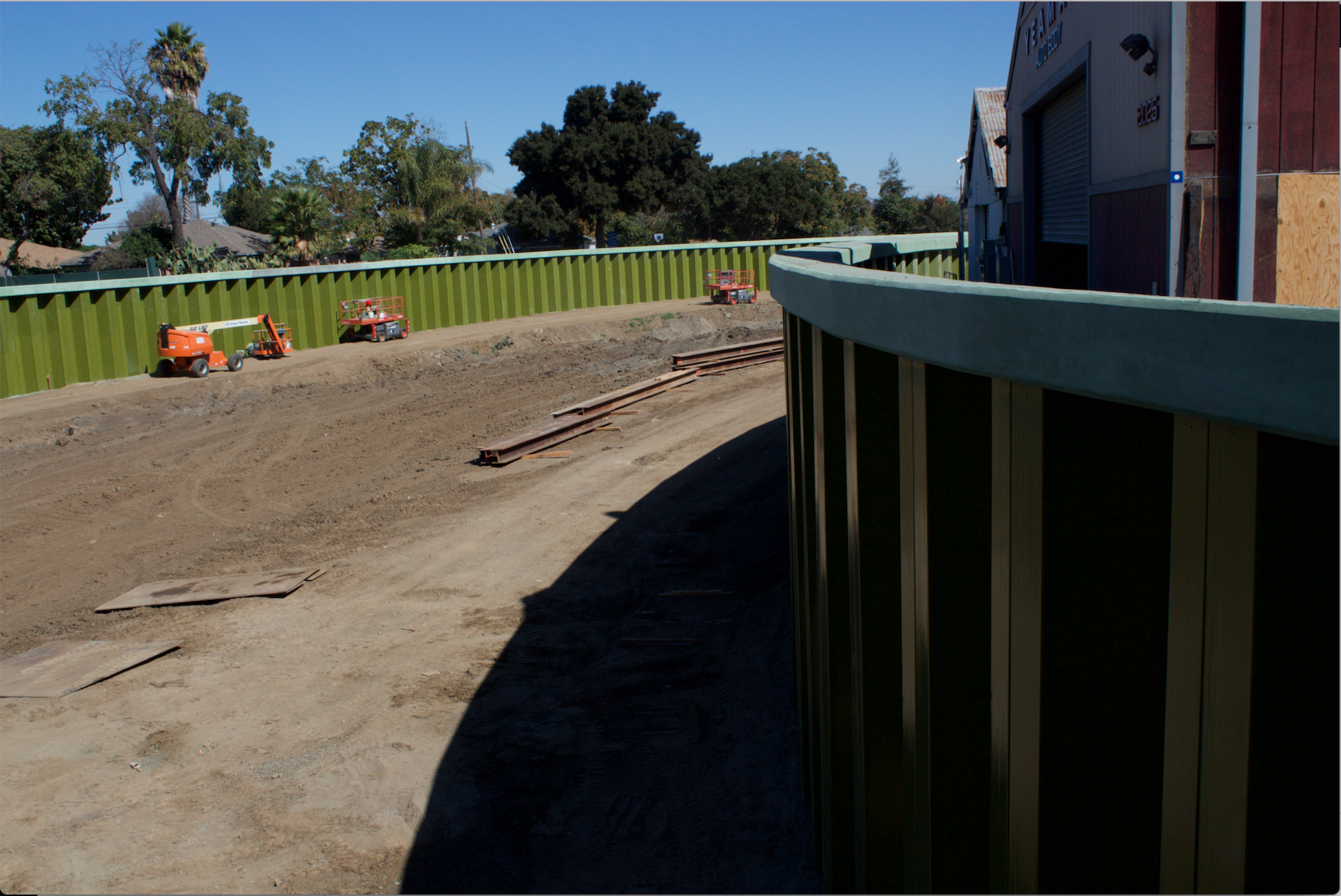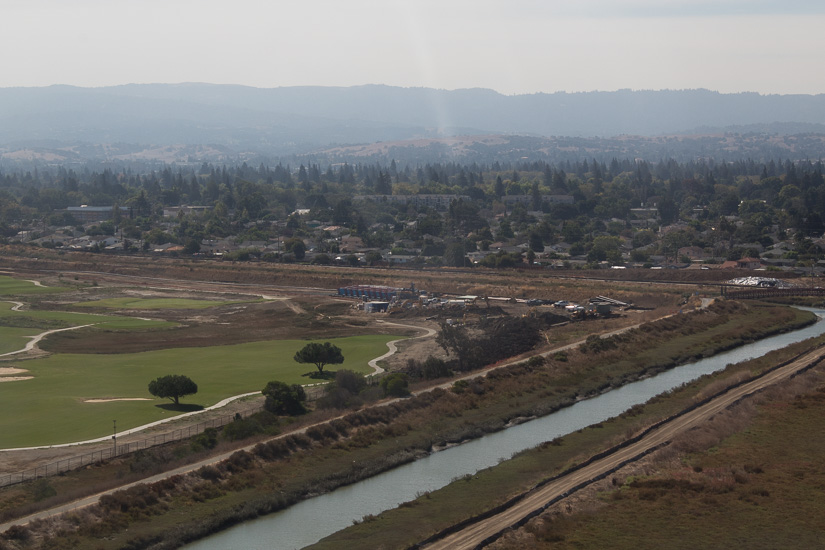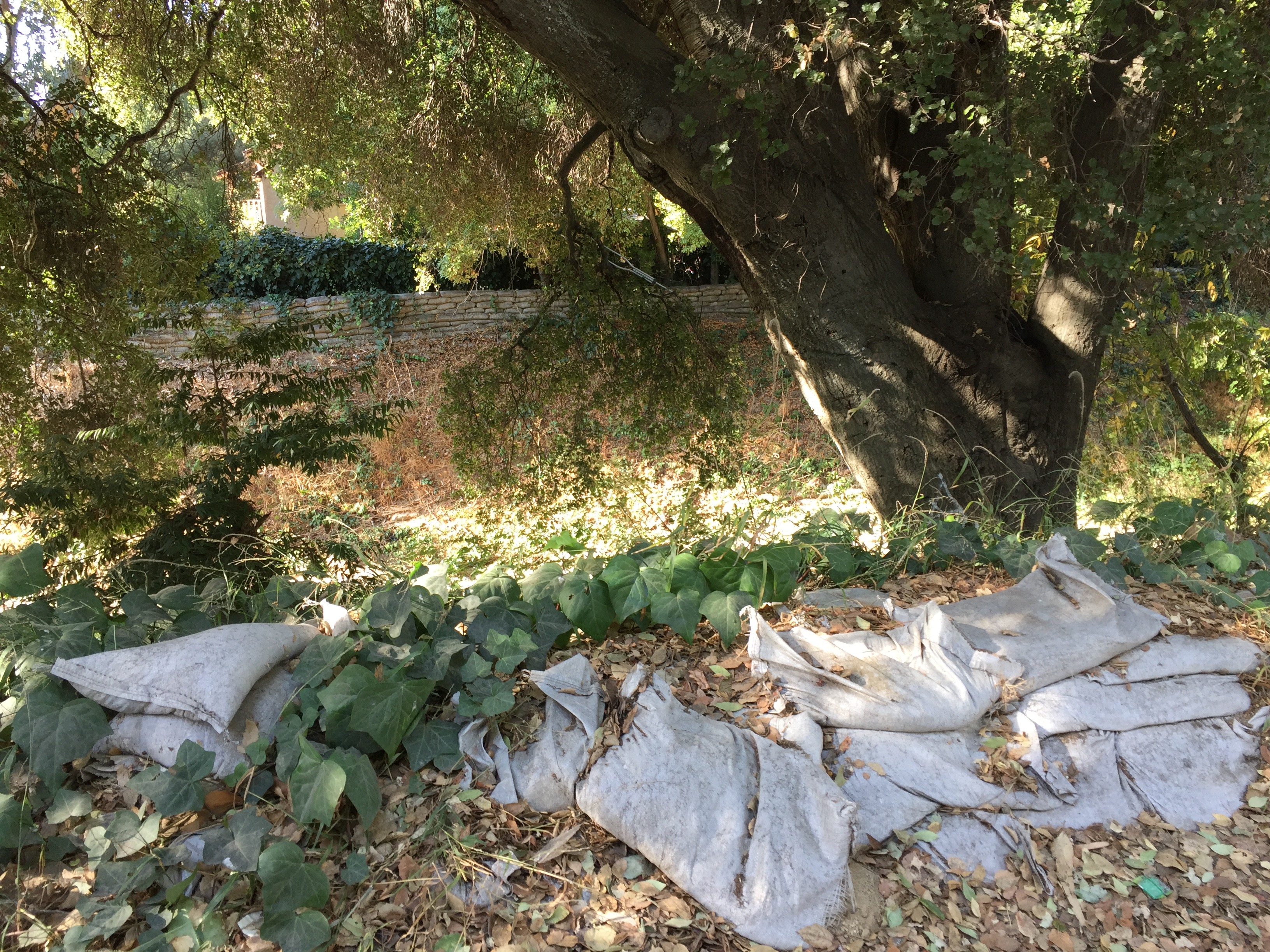
[dropcap letter=”R”]esidents of East Palo Alto can feel more protected from San Francisquito Creek flooding this coming winter, officials said, since construction of floodwalls and levees in inhabited areas along the waterway will provide additional protection that was not there in past years.
The entire water barrier is scheduled to be completed by the end of 2018.
According to the San Francisquito Creek Joint Powers Authority, a multi-jurisdictional government body that addresses issues of flooding in Santa Clara and San Mateo counties, the $63 million floodwalls and levees in East Palo Alto are designed to withstand a 100-year event, two feet of sea level rise and high tides. Len Materman, the executive director of the Joint Powers Authority, said that this level of protection could withstand a Hurricane Harvey without major damage.
While the East Palo Alto creek-side properties are now less likely to flood, Palo Alto and Menlo Park remain in greater danger of flooding. Once the East Palo Alto project is completed the Joint Powers Authority hopes to begin construction of one or a combination of possible flood protection projects in Palo Alto and Menlo Park. They are currently discussing different protection options like replacing bridges, building bypasses and adding floodwalls along the most vulnerable parts of the creek.
Flood protection is particularly important in cities like East Palo Alto, Palo Alto and Menlo Park because they are in an alluvial fan, or an area where creeks naturally overflow as they move to the San Francisco Bay from the mountains, explained Trish Mulvey, a citizen watershed expert in Palo Alto. East Palo Alto is particularly vulnerable because it is also on the bay floodplain, which can become a greater flood threat as global warming leads to sea level rise.
There is no telling when the flood protection projects in Palo Alto and Menlo Park will begin construction. It took nearly two decades after flooding from the San Francisquito Creek damaged 1,700 homes and businesses in 1998 for construction of protective infrastructure to begin in East Palo Alto.
The Joint Powers Authority’s flood protection projects illustrate how lengthy and complicated building flood protection infrastructure that crosses city boundaries can be. Every step of the process must be coordinated among all the cities involved. Permits must be obtained to build on the creek habitat because it is home to three endangered species – the Ridgway rail bird, the salt marsh mouse and the Steelhead trout. The combination of coordination, funding and permitting means project process will inevitably be slow.
“It’s a limitation of our system of government,” said East Palo Alto Vice Mayor Ruben Abrica, who describes the multi-agency approach to flood protection as a “jurisdictional stew” that can prevent communities from cooperating in a timely manner.

Although the Palo Alto and Menlo Park projects are still at the planning phase and have no construction start date, East Palo Alto is happy that it will at last be more protected.
“I really feel that this season may be the first season ever in the history of East Palo Alto when there is a measure of conscious protection that is being brought to the residents,” said Abrica at a public board meeting of the Joint Powers Authority. The construction of the floodwalls is one of the few examples of large-scale development for public benefit in East Palo Alto.
Seeing the floodwalls in the dry season, when barely a stream of water runs through parts of the creek, one would think there is no amount of water that could possibly run over them. They are so tall that rooftops are barely visible behind them and the channels between them so wide a small propeller airplane could land in the space between them. The scale of the floodwalls is no exaggeration because water has risen to the height of a two-story house within the creek channel in the past.
Dennis Parker, a resident of the Gardens neighborhood in East Palo Alto that borders the creek, says that the installation of the floodwalls makes him feel safer. Parker is also happy because the floodwalls mean people in his neighborhood can have their flood insurance reduced. This, he said, will be a relief for struggling families that pay up to $1,500 in flood insurance per year.
“We are focused on getting people completely out of the flood insurance program,” said Materman.
To get Palo Alto and Menlo Park residents out of the flood insurance program, the existing creek infrastructure must be updated.
Currently, the Santa Clara County side of the creek is protected by a wall of sacked concrete and the San Mateo side by stacked sandbags. According to the Joint Powers Authority this is not enough to withstand a repeat of the 1998 San Francisquito flood that cost $28 million in damages.

Materman said he wants to see a project that can be completed in the short term.
“No one knows exactly how fast seas will rise, but we know they’re rising, so the science says build something,” he said. “I’m not understanding why more agencies aren’t recognizing that this moment of time is a good time to do it.’”
